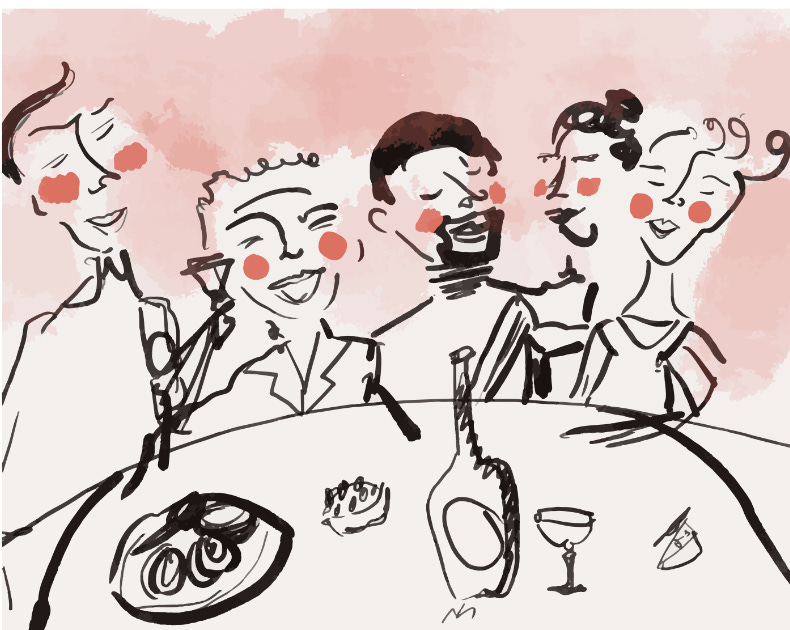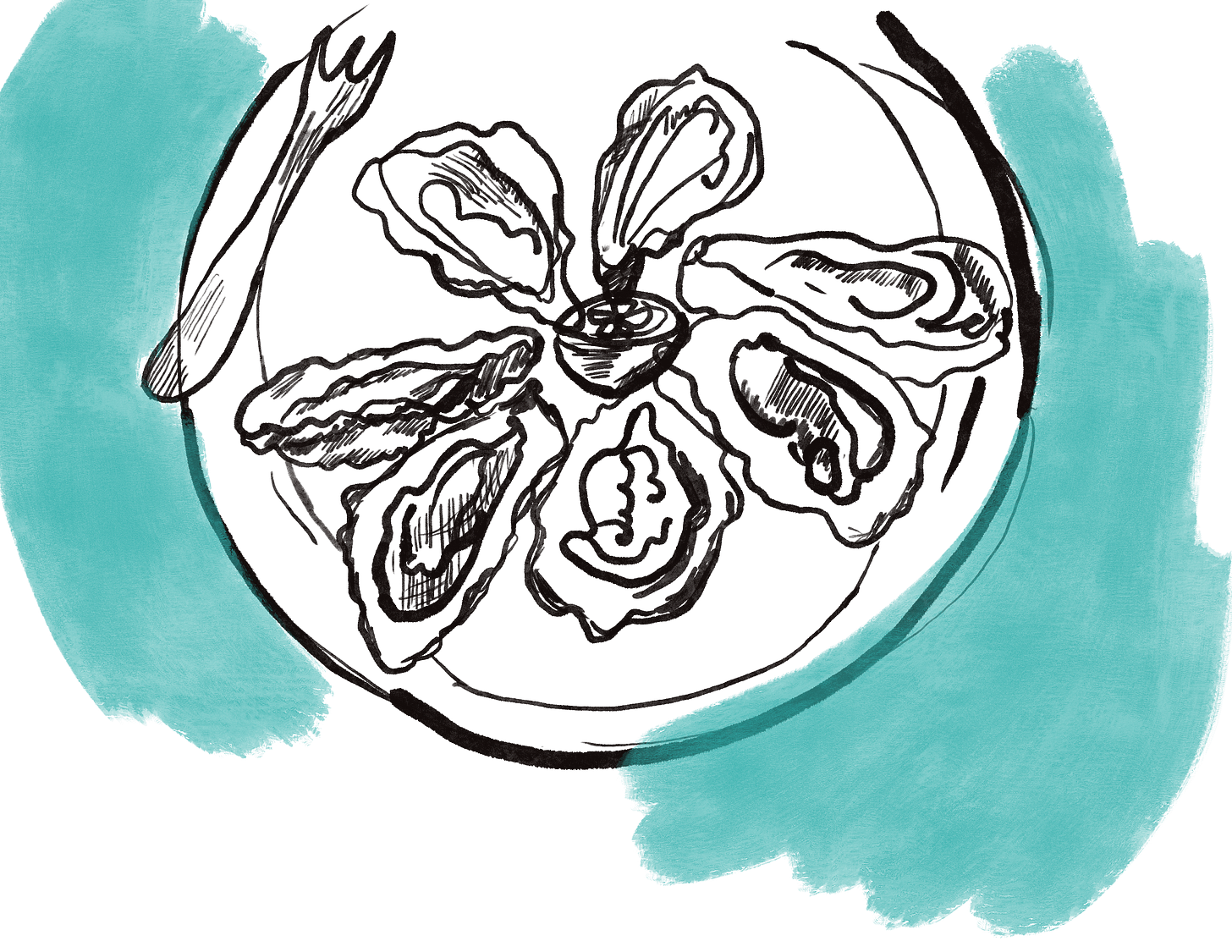Dear Friend,
I hope you’ve had a good week. This is a very un-Spring like Spring in Paris so far. In fact, today it is positively COLD! In May! This isn’t what anyone signed up for.
Despite the weather, summer is approaching and so are the Olympic Games! As I write, the Olympic Torch has just arrived at Marseille port. Earlier this week, we went to a test event at the new Aquatics Centre in the northern suburb of Saint-Denis. The centre is one of only a couple of venues that have been purpose-built for the Games. All the rest will utilise existing infrastructure or pop-up structures — for example, the fencing will take place under the Eiffel Tower, the equestrian events will take place in the garden of the Palace of Versailles and the opening ceremony will take place on the Seine river.
Many people around the world, including myself, are excited about the events this summer. Parisians, on other hand, are engaging in their own specialist sport: unimpressed scepticism! Locals anticipate transport chaos and maddening crowds, while satirical journals, such as Charlie Hebdo abound with ghoulish cartoons about the risk of a terrorist attack.
But perhaps the Parisians aren’t as sceptical as they seem, or not all of them anyway. The test event on Monday, a water polo match between the French and American women’s teams, was sold-out and the atmosphere was peppy and interested. The venue itself was impressive with its striking wooden frame and curved roof, which doubles as a giant solar panel. It will be linked by a footbridge to the Stade de France, traversing the A1 highway in this notoriously concrete-y pocket of the near suburbs.
I have written before about the singular relationship between Paris and its suburbs. Paris intra-muros, the 20 arrondissements that make up the city itself, are necessarily quite uniform in appearance thanks to the 19th-century Haussmann renovation and subsequent building regulations.
The nature of the tightly-packed sandstone apartment blocks creates a dense, intimate, sometimes claustrophobic way of living and we locals make often impractical compromises to fit in with the city e.g. walking up and down several flights of stairs to get to our homes, or transporting heavy things by sheer carrying, and other ingenious methods (the other day I saw a man riding a Vélib rental bike one-handed while dragging a packed-full shopping trolley in his other hand). The particularities of trying to overlay a 21st-century city on a 19th-century one.
Because of the physical limitations of the city itself, Paris in some ways is fixed in time. Its harshest critics accuse it of being a ville-musée – a museum town – a beautiful but hardly liveable piece of theatrical décor.
If Paris proper is the onstage, then the near suburbs that lie beyond the Boulevard Périphérique ring-road are the backstage, the wings. Here you’ll find the headquarters of the huge companies that dominate the economy (L’Oréal, EDF, Total, for example), the lorries that deliver food and goods, as well as the homes of many of the city’s workers.
Suburbs like Saint-Denis, with their high-rises, concrete and highways — for better or worse — look like they belong to another era: our era. Without the same structural and romantic limitations of the inner city, these areas are a better site for fast development or change. This can be positive. For example, new infrastructure such as the driverless Line 14 Metro and the Aquatics Centre are built with accessibility in mind. Inclusivity for people with disabilities is an area in which (on-stage) Paris until this point has been woefully behind.
I think and hope that the Games will be an opportunity for many to visit the less postcard-y but very interesting suburbs, and get a sense of Paris as a place with both a rich history, and an interesting future, too.

A very nice job it was too
In 2020 in the depths of the pandemic I had the idea of writing and illustrating a children’s book about the adventures of my dog, Babbet, in Paris (that’s still on my to-do list). I always loved drawing but lacked some technical know-how and decided to sign up to a weekly class at the Atelier des Petites Ecuries in the 10th arrondissement, taught by Carlo Ajmar, a fantastically talented artist and landscape gardener. He also plays the medieval lute, because why not.
The classes were initially online, and gave structure to my life at a difficult time, as well as the satisfaction of little by little seeing my visual skill improve. I have gone to the weekly classes on and off since and now draw almost every day. In 2022, I started publishing my artwork via Pen Friend and in 2023 was approached to sell some of my pieces.



Early this year I was commissioned to draw a number of small flourishes and larger scenes for Le Beauvallon, a magnificent terracotta-coloured, Gatsby-esque house across the bay from Saint-Tropez in the south of France. Available for private hire, it’s a grand and traditional mansion decorated inside with an eccentric twist. I got to go down there for a visit a few weeks ago and take inspiration in real life (pictures above).
You can find some of the pieces I produced for Le Beauvallon below, and also published on their Instagram ‘highlight’ covers.
I hope you like them!
Thirty-second book club
I read The Hidden Vineyards of Paris by Geoffrey Finch in preparation for an article. Geoffrey is a wine expert, a natural wine advocate and a very knowledgable person who leads tours of Paris through his company Paris Wine Walks. I went on his Latin Quarter Unbottled tour on Sunday and had a thoroughly jolly time. Geoffrey sheds light on the little-known history of Paris and its region as a huge producer of wine, all the way back to the Roman era. I didn’t know that the Paris region was one of the most important wine-producing sites in Mediaeval Europe and that the wealth generated by this industry funded early Gothic architecture. Interesting stuff. I will share the article once it’s published!
I have very almost finished Demon Copperhead by Barbara Kingsolver. It’s an astoundingly good novel that lays bare the gnarly underbelly of America, in particular the power wielded by large companies and utter ruthlessness of the medical industry, manifested in the opioid epidemic. It’s also a beautifully written and tender coming-of-age story. I must thank Swedish Linn the violinist from my book club, who chose this remarkable book for us to read.
Et voilà, that’s all for this week. Sorry that the letter came on Wednesday, not on the weekend. I blame the generous wine serving on the tour on Sunday.
I hope you have a good rest of your week.
Thank you very much for reading all the way to the end. Please share Pen Friend if you like it!
Yours,
Hannah










Hi Hannah ! I appreciate the wine tour suggestion. I’m in charge of the itinerary for me and a friend’s trip to Paris (mine countless, his first), and it would be something new for both of us !
Gorgeous illustrations!